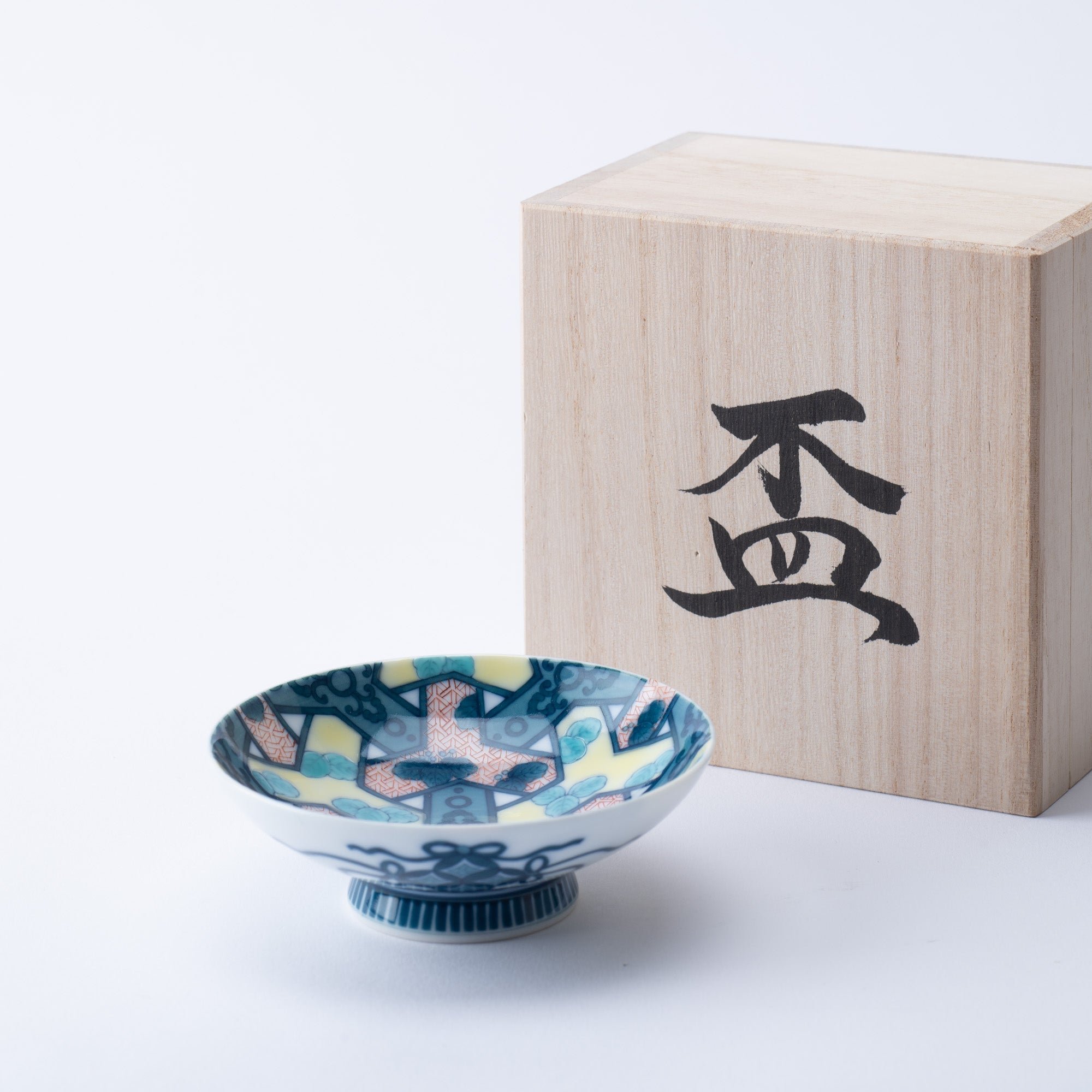
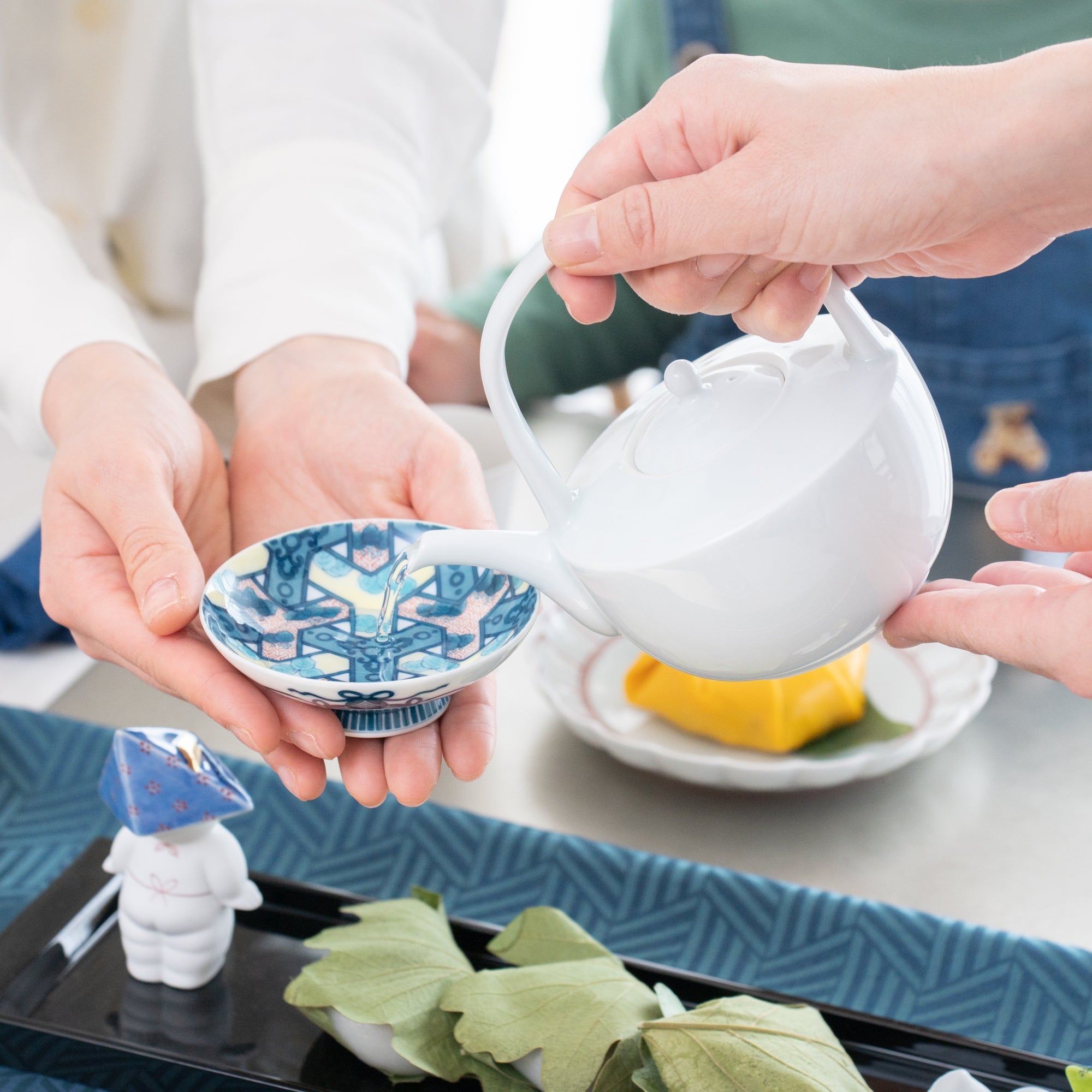
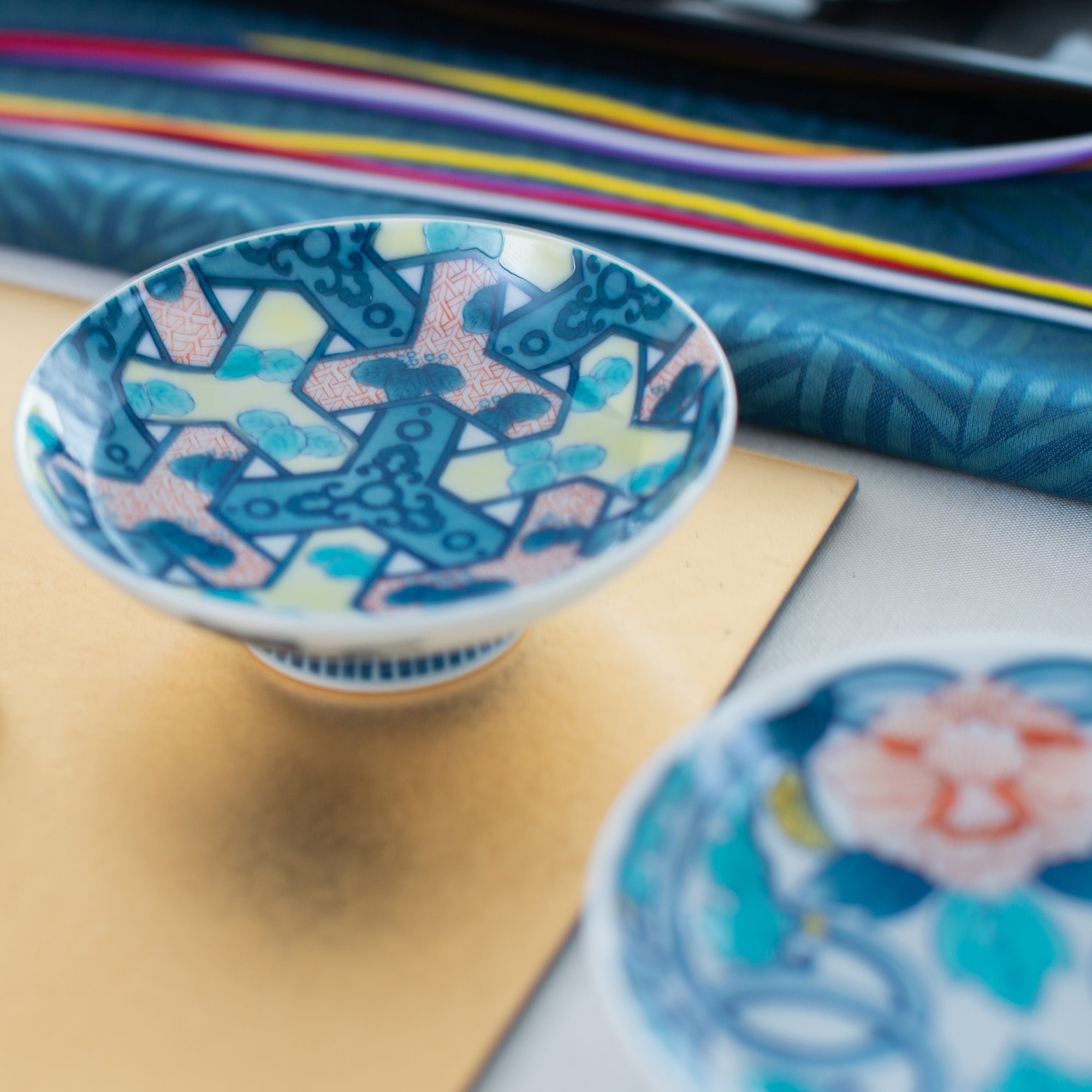
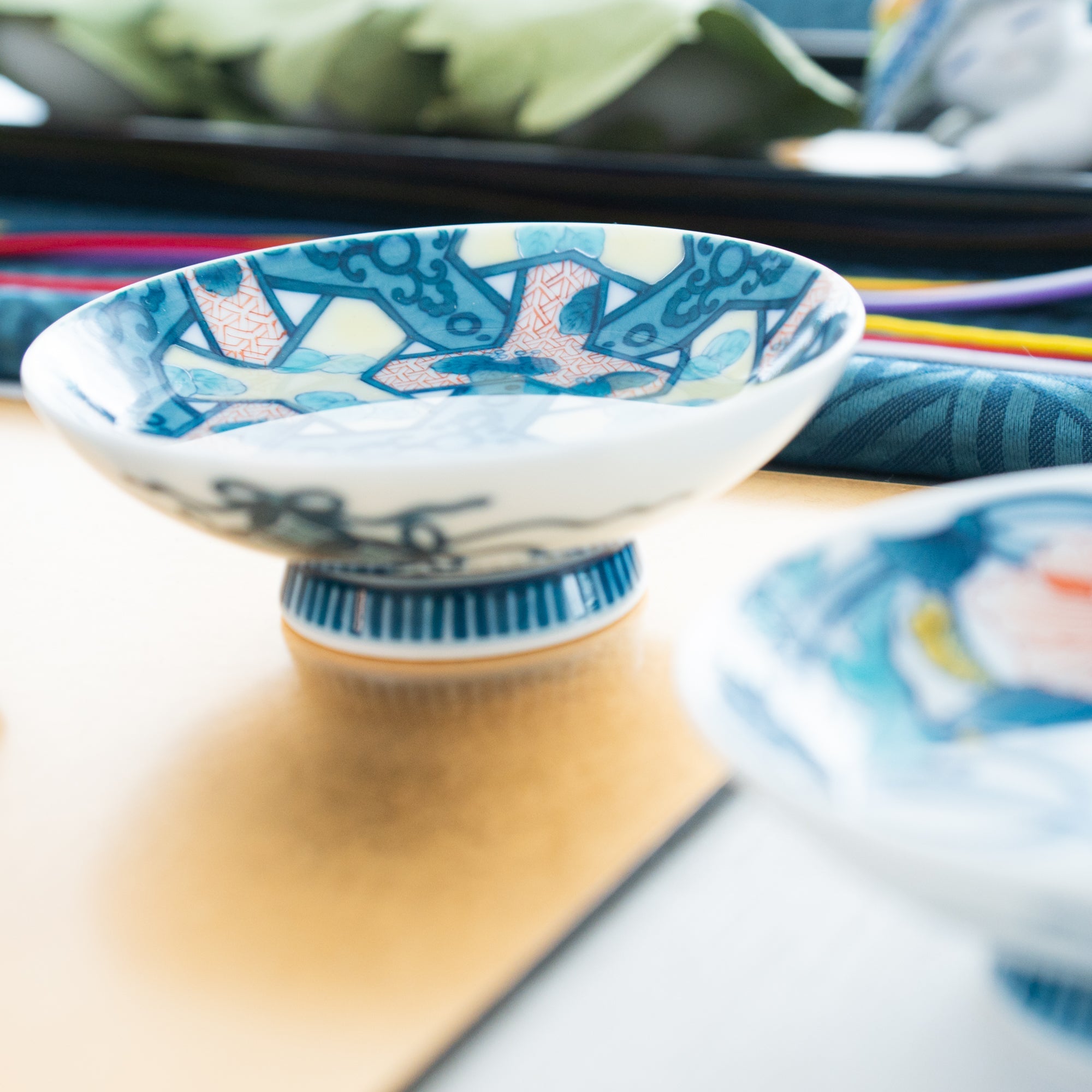

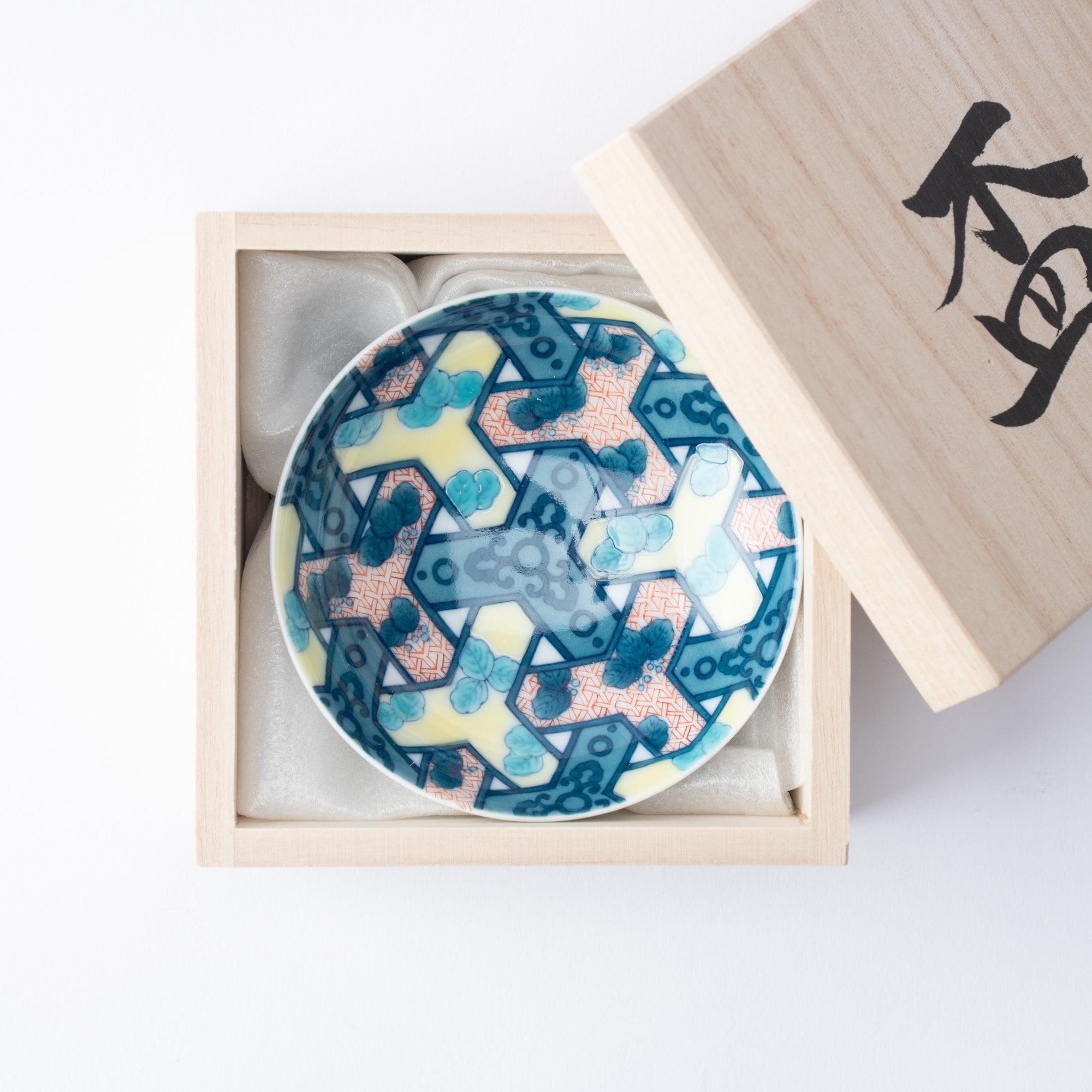
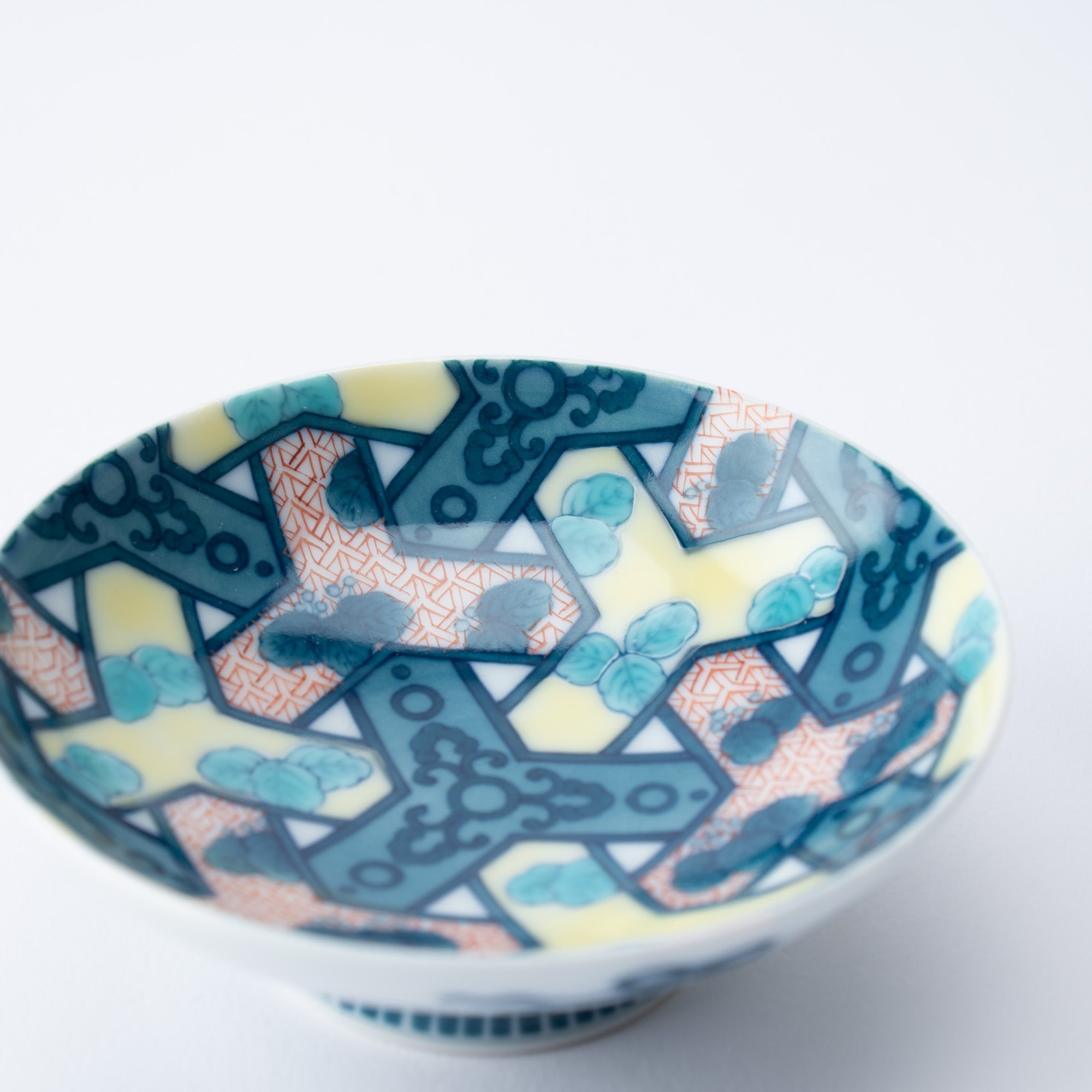
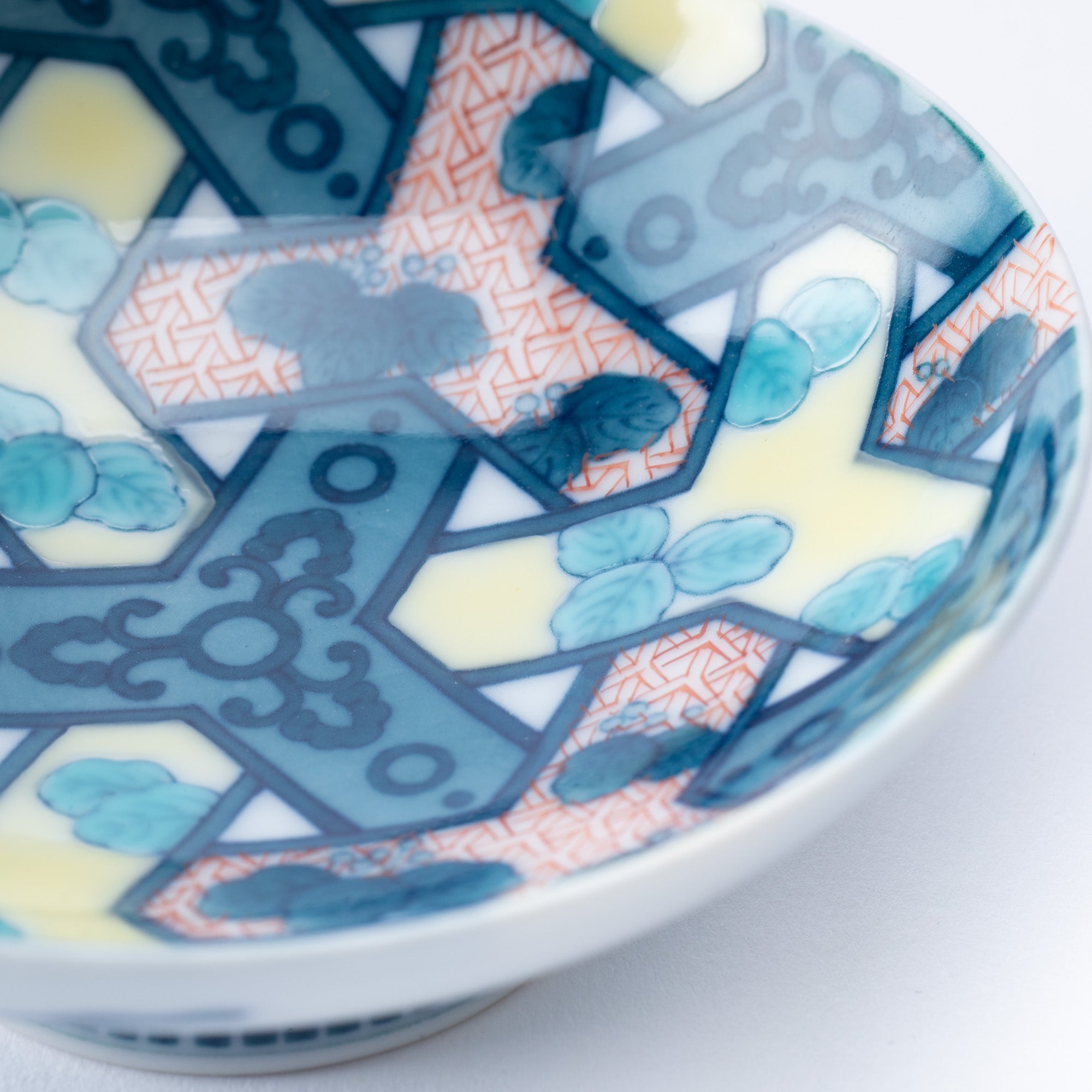
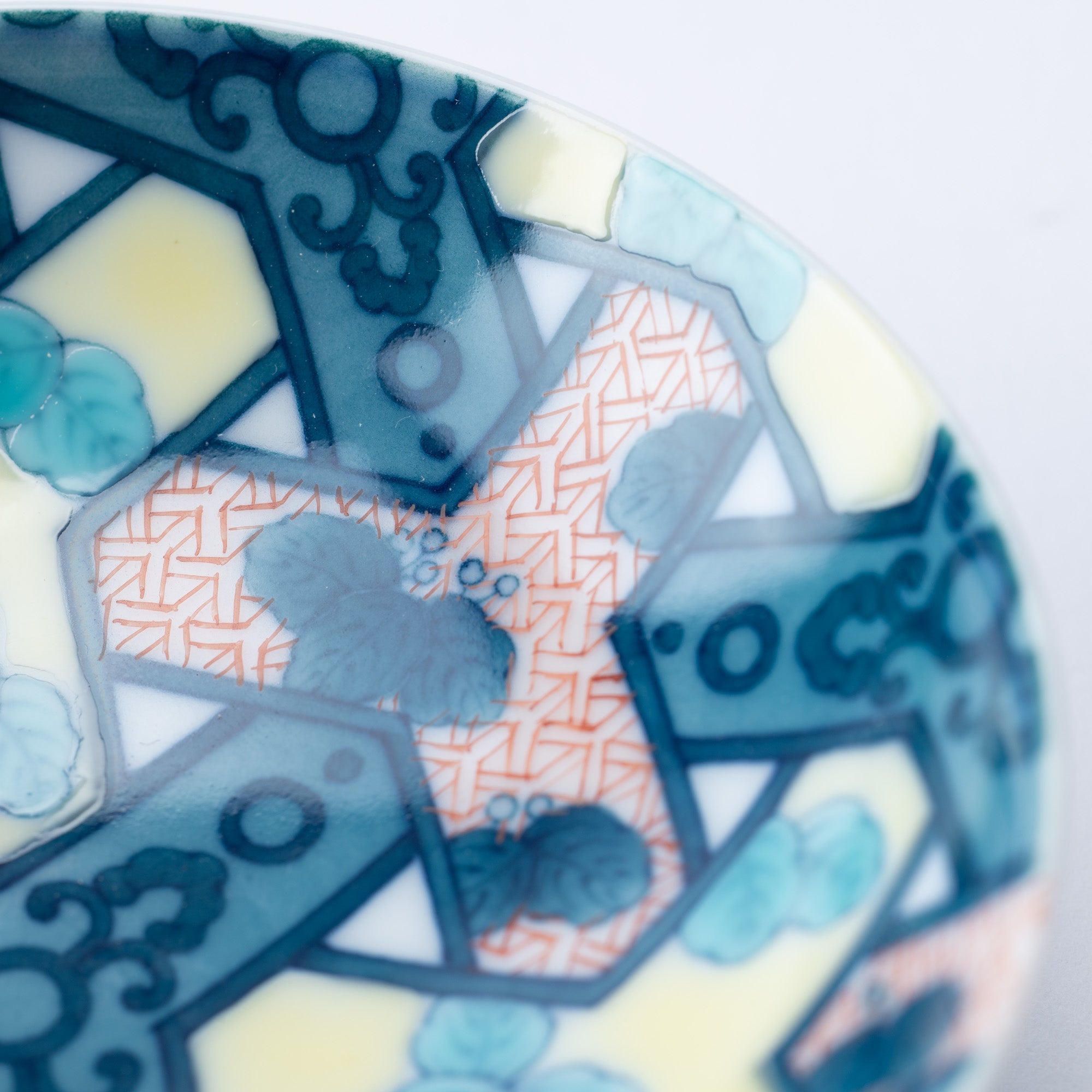
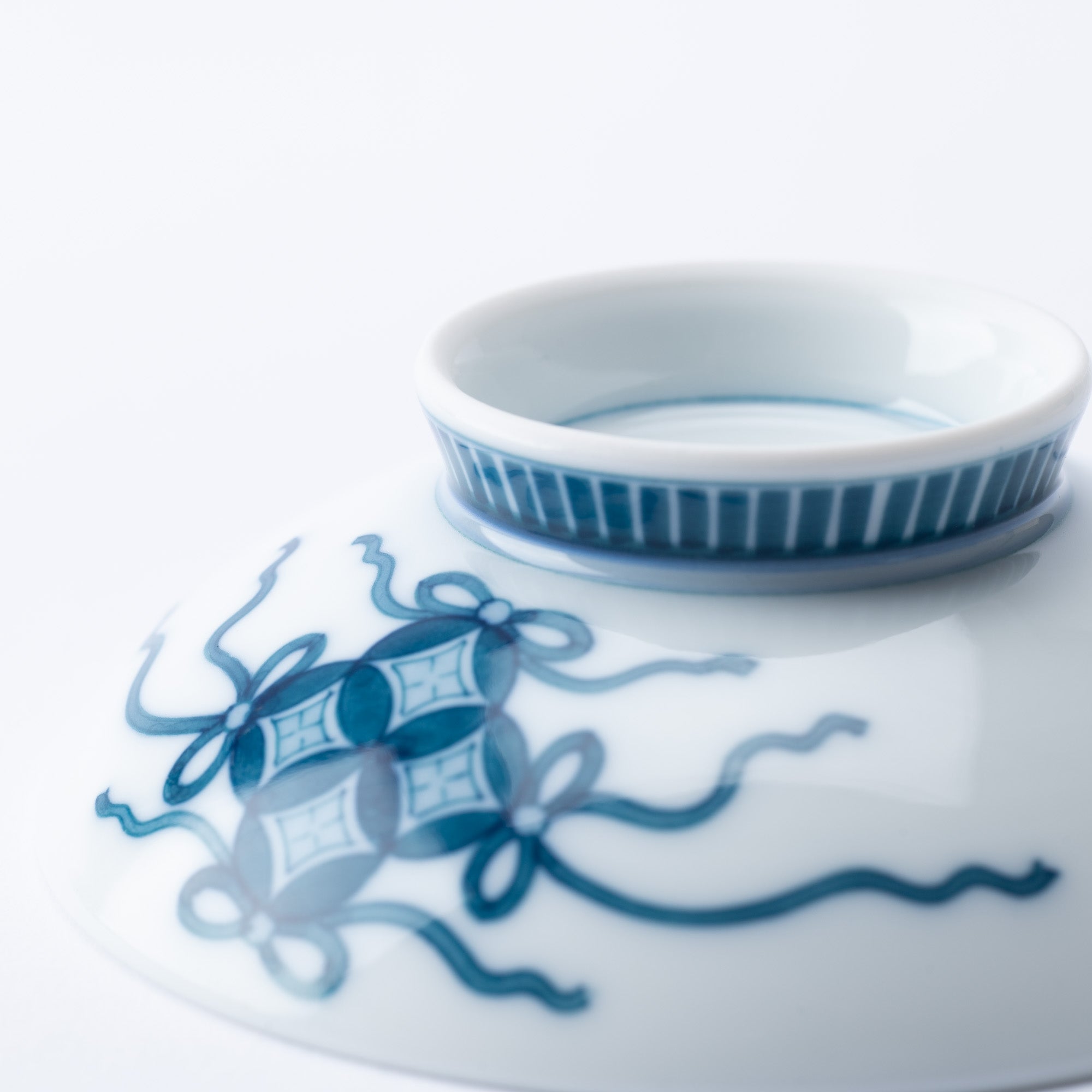
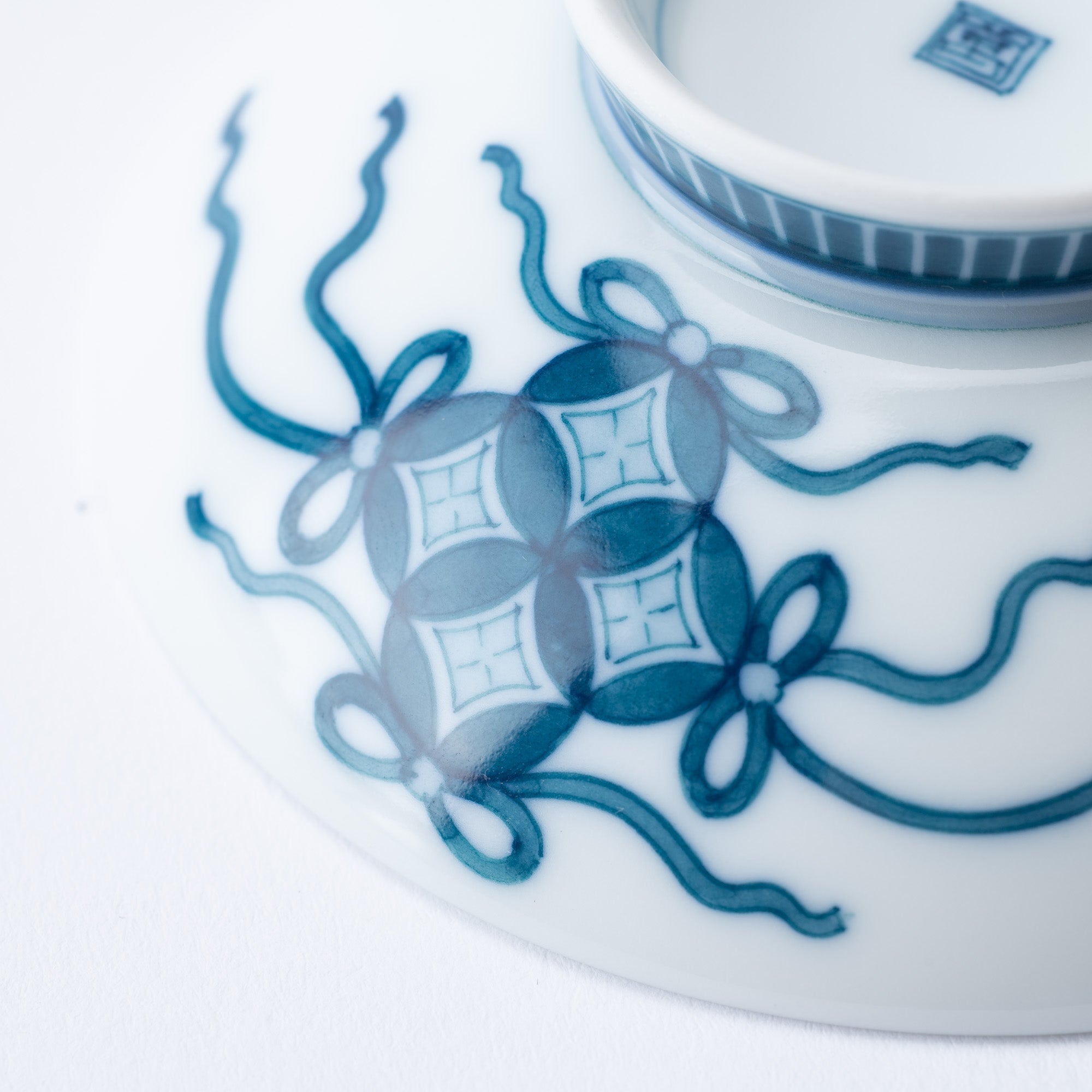
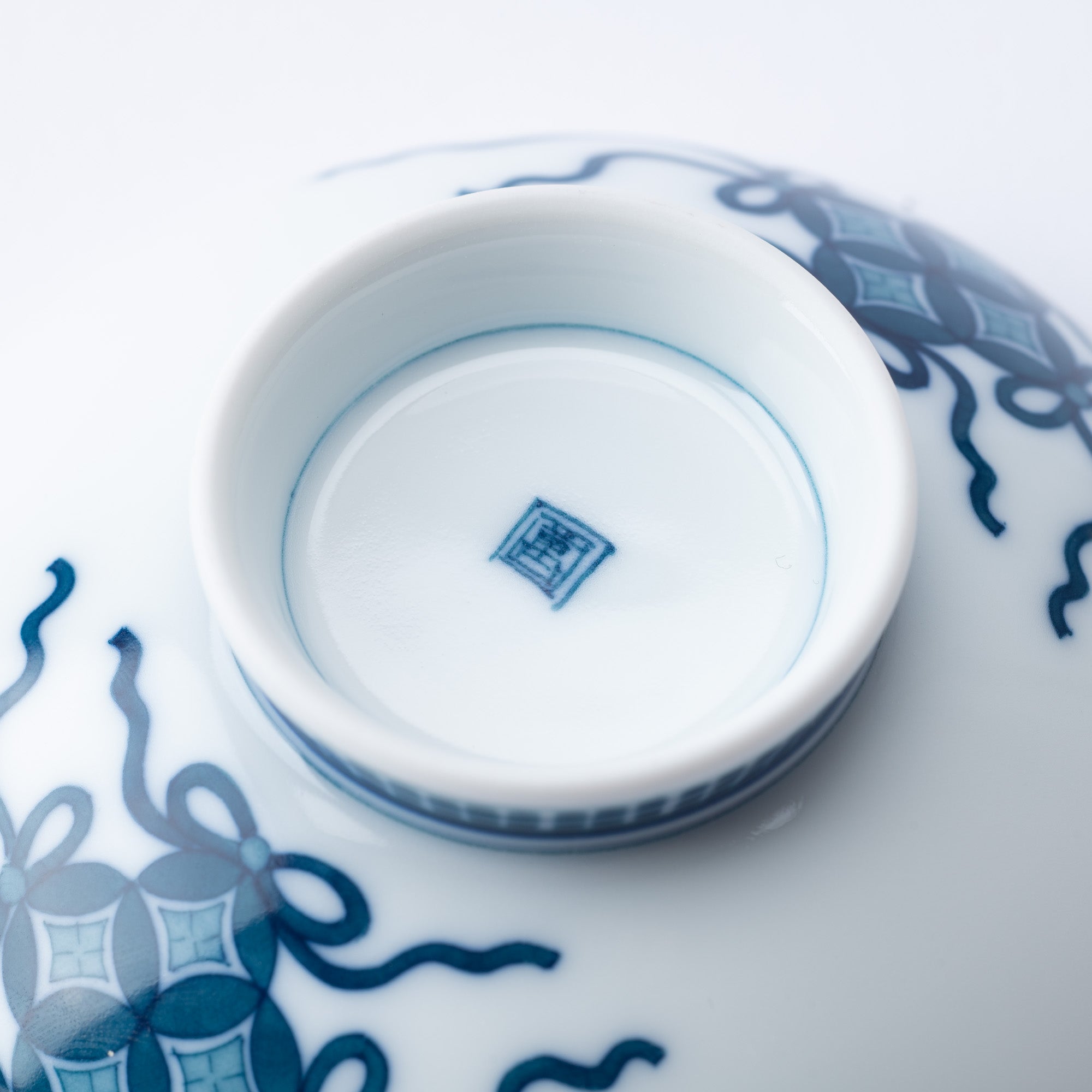
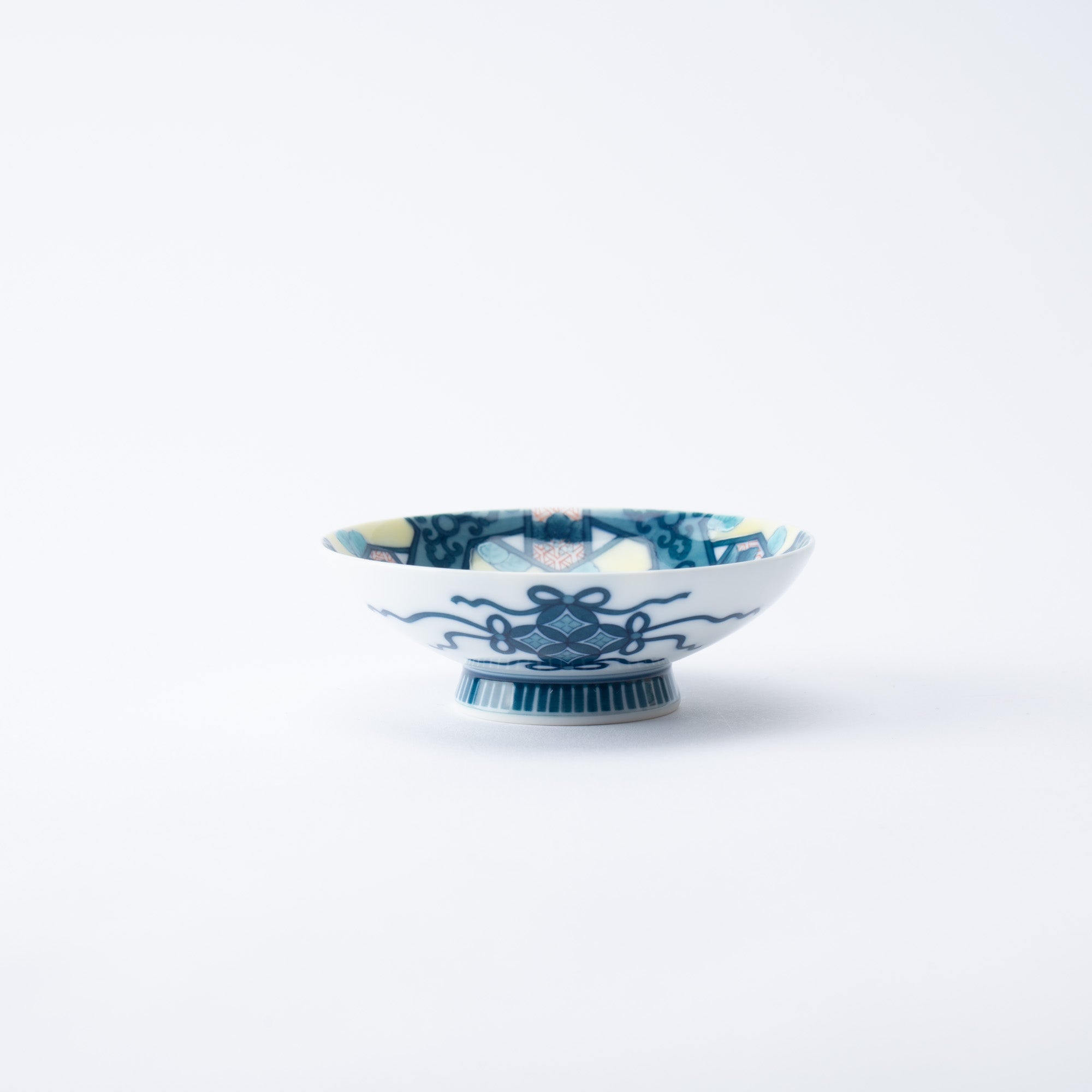
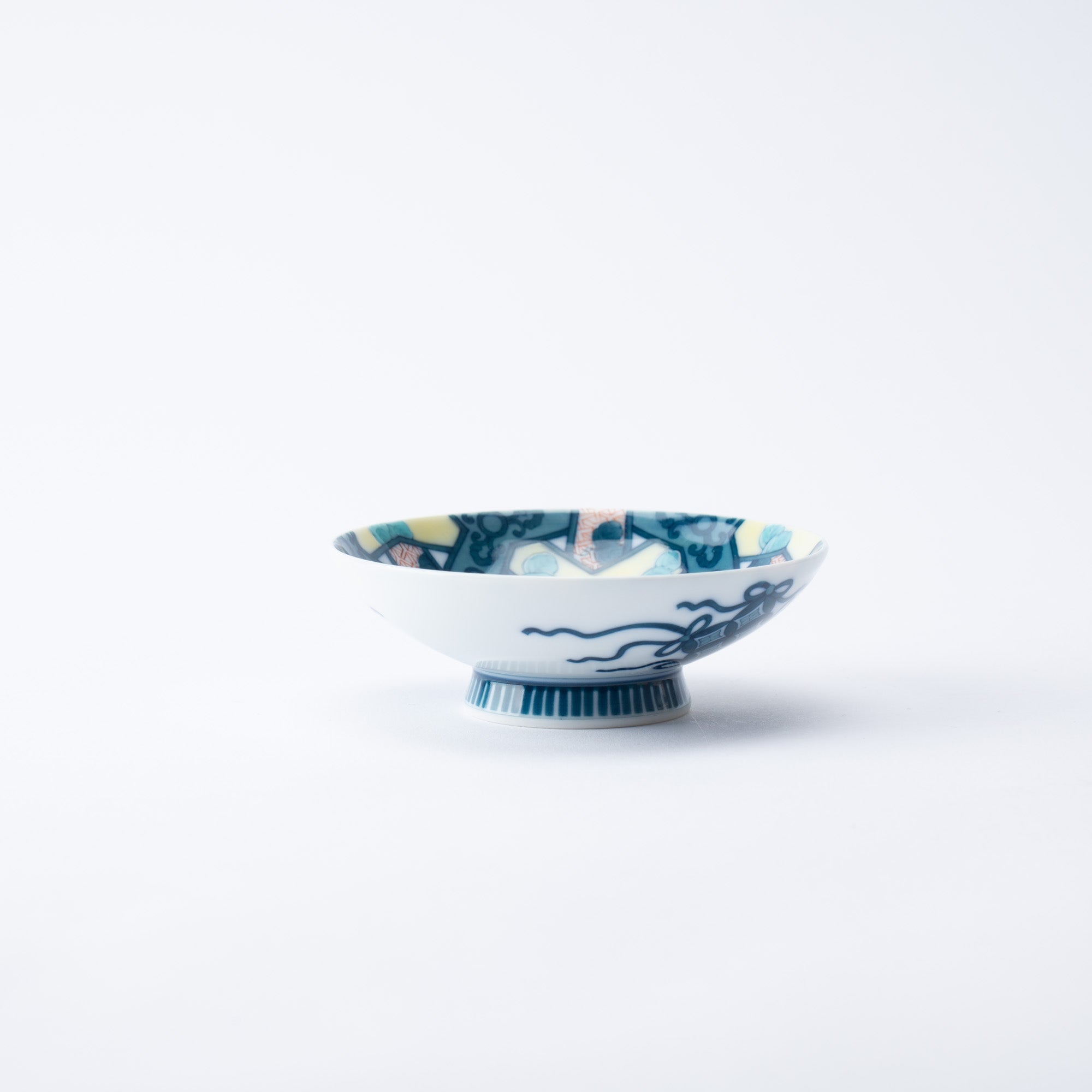
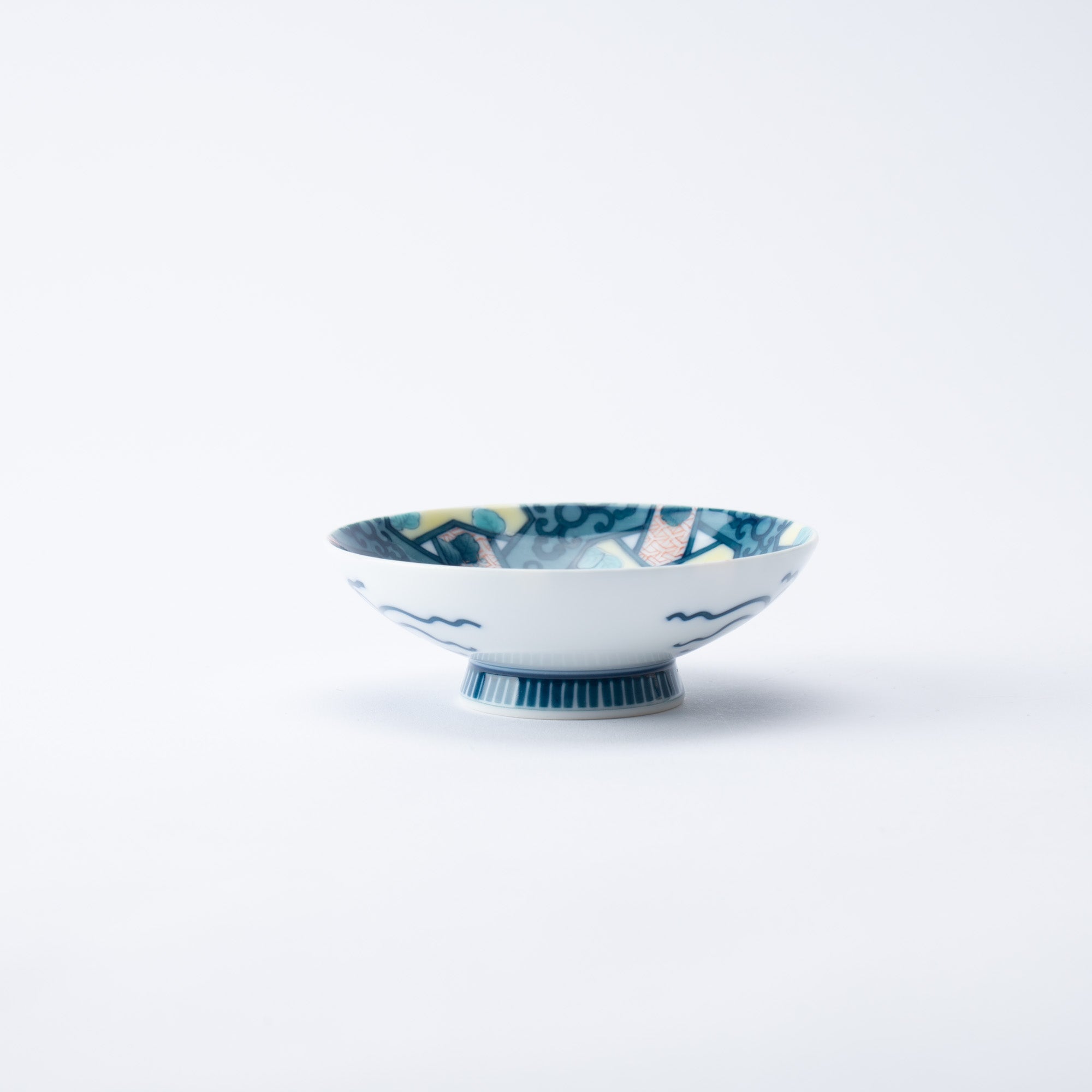
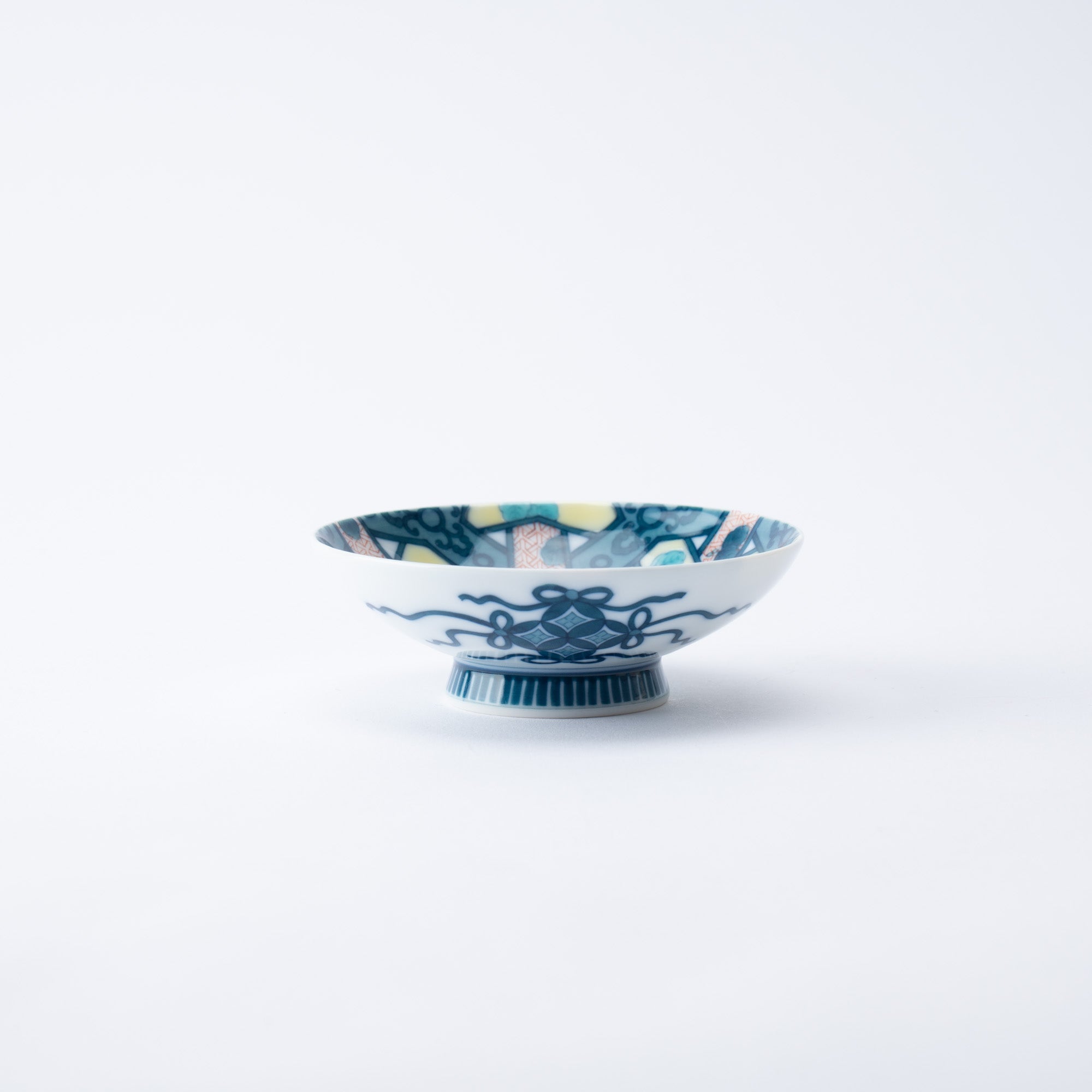
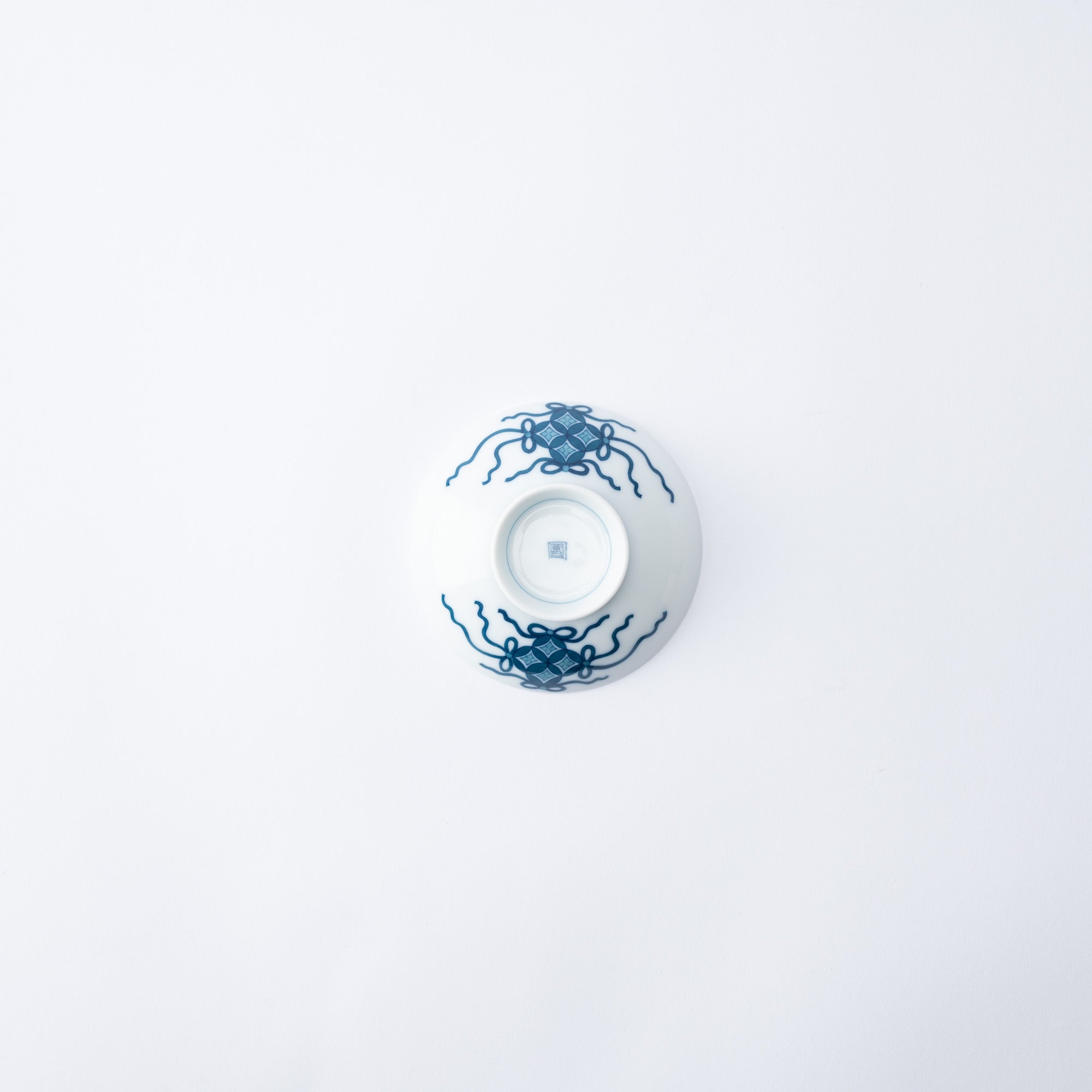
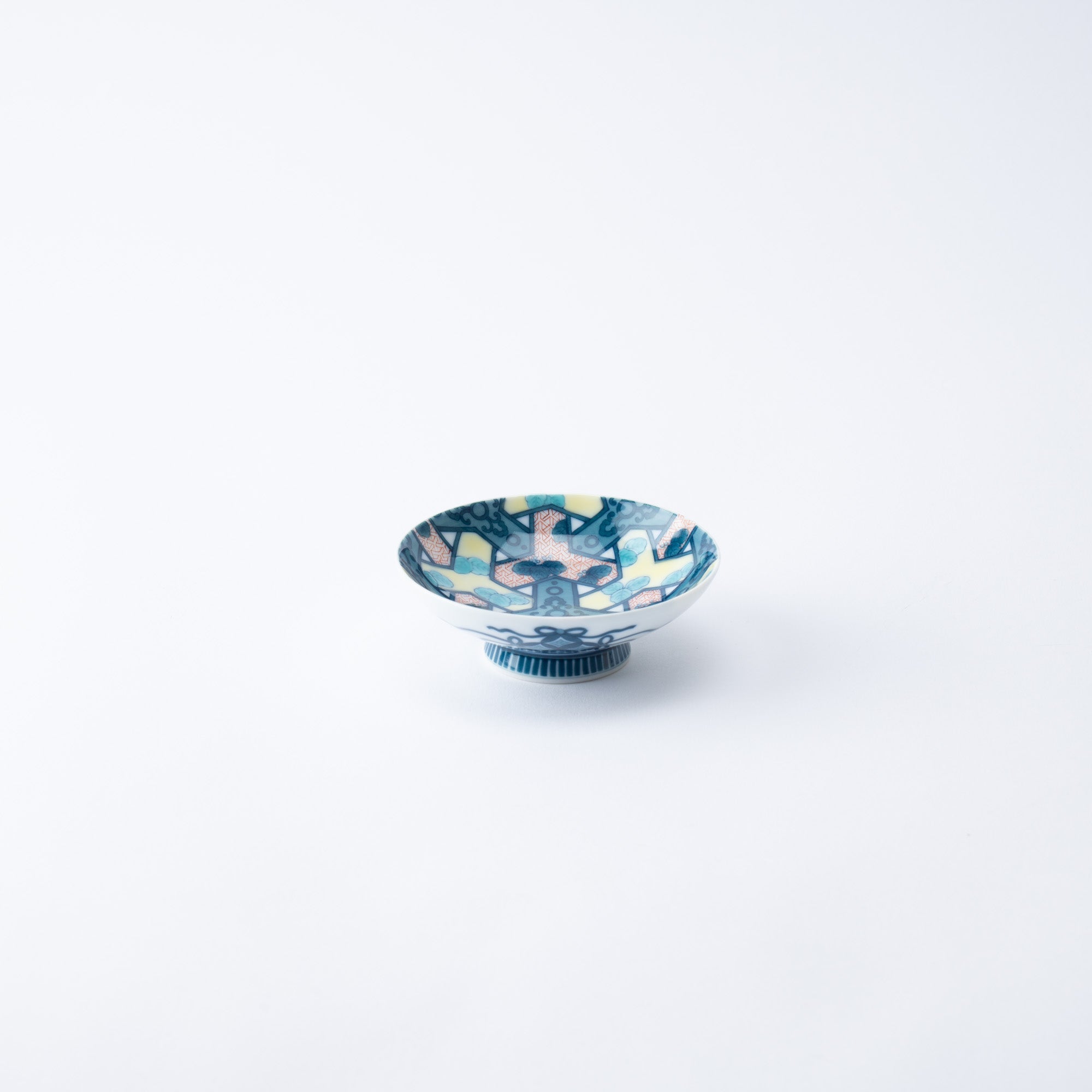
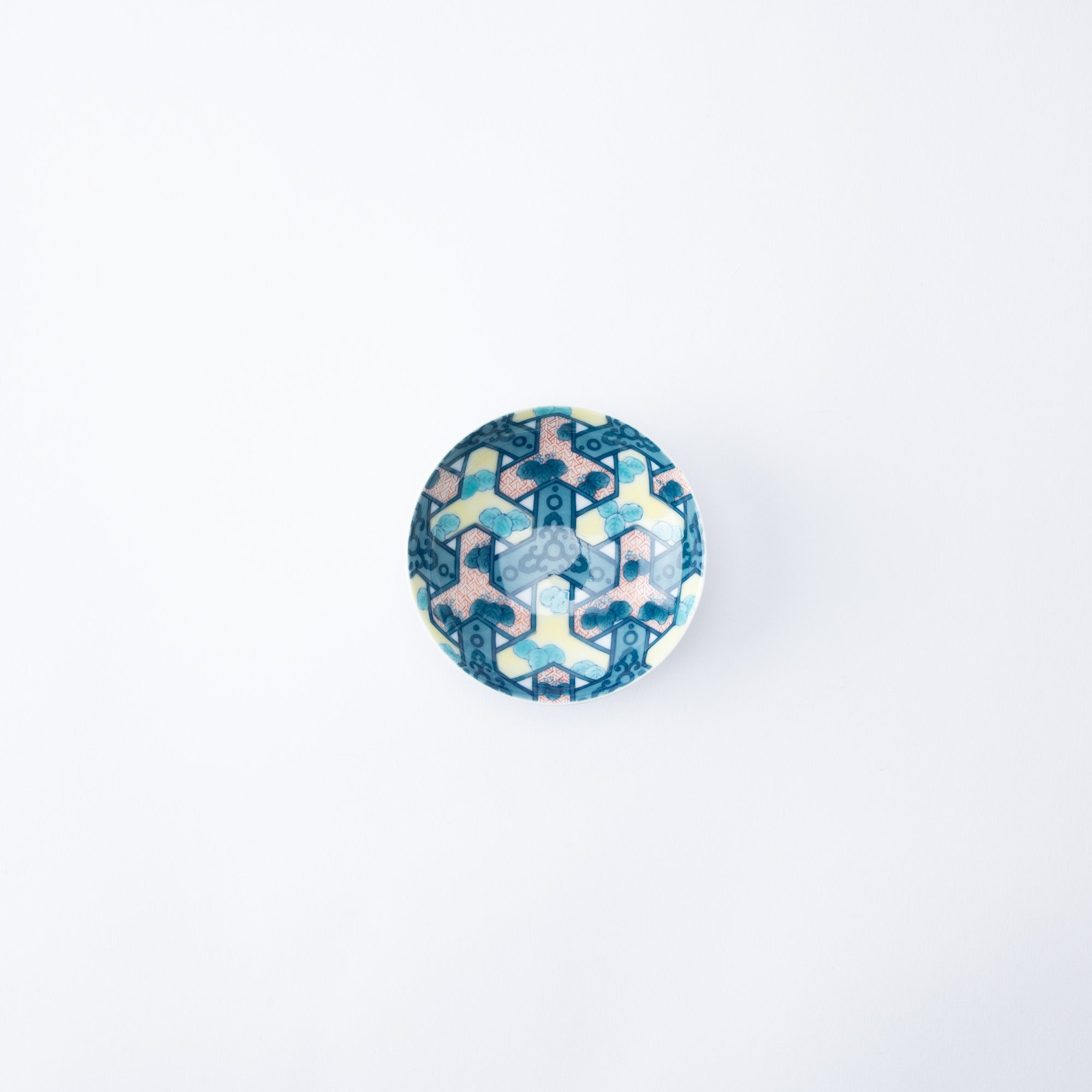
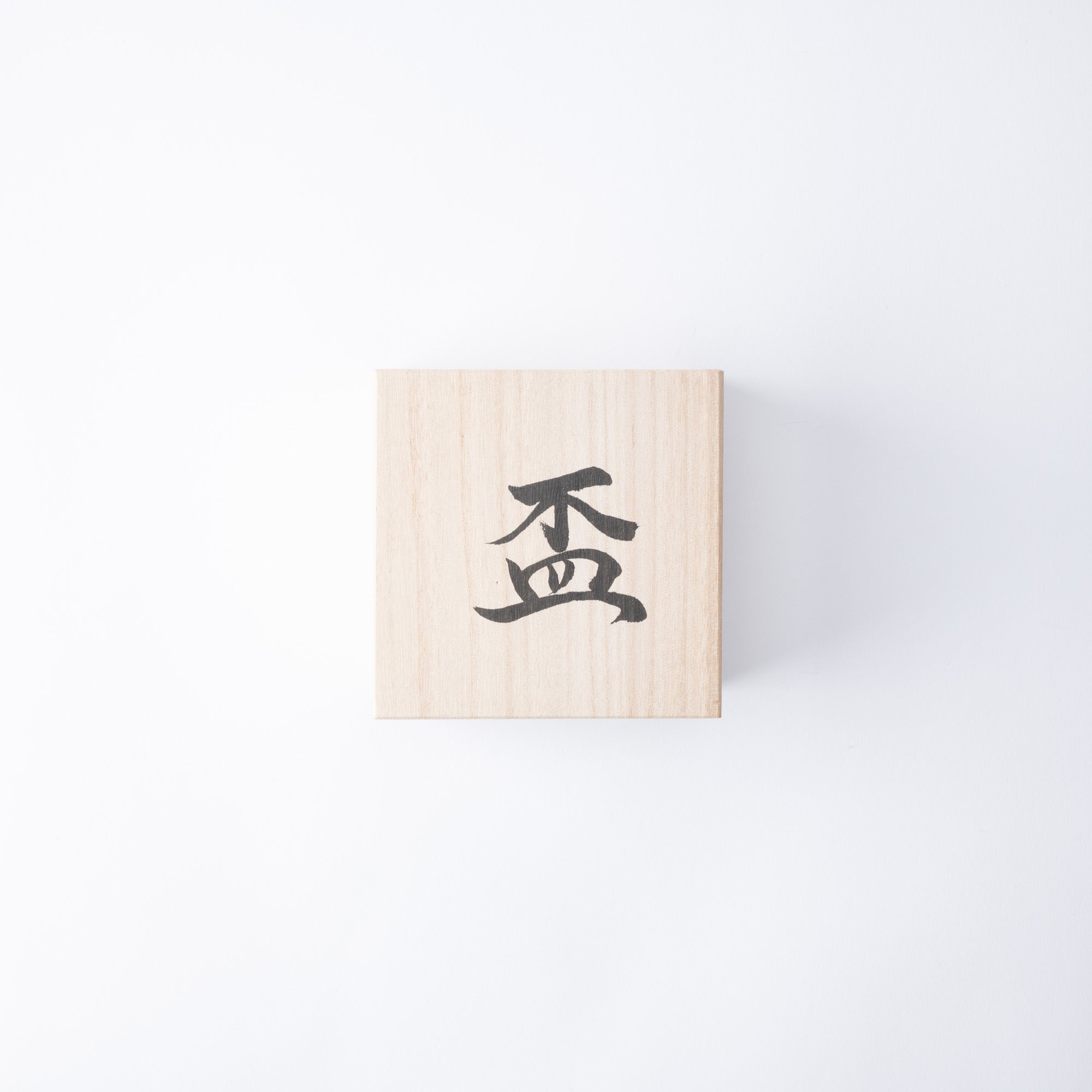
Nabeshima Sakazuki Flacher Sake-Becher mit Schildpattmuster
Estimated Shipping Widget will be displayed here!
Das Sakazuki flache Sake-Tasse ist sorgfältig mit dem traditionellen dekoriert Kikko "Schildpatt" Design mit extrem feinen Pinselstrichen, gezeichnet von erfahrenen Handwerkern. Der Name dieses Schildpattmusters ist das Bishamon-Kikko-Muster, inspiriert von der Kettenrüstung des Kriegsgottes Bishamonten. Es zeigt die Mitsumori Kikko-Motiv mit drei Schildpattformen, die zu einem einheitlichen Design miteinander verbunden sind.
Die Innenseite des flachen Sakazuki-Sake-Bechers ist mit dem Schildpattmuster verziert, einem klassischen Nabeshima-Muster, während die Rückseite mit einem Cloisonné-Muster geschmückt ist und die Seite des Ständers das ikonische Kushime "Kamm" Muster der Nabeshima-Ware.
Der Stil von Iro-Nabeshima hat traditionelle Regeln, bestehend aus Blau auf Weiß von Sometsuke und die drei Farben für auch bekannt (rot, gelb und grün). Nachdem der Umriss in Indigoblau gezeichnet wurde gosu Pigment, Aufglasurmalerei in Rot, kibi (gelb) und moe (Grün) wird als Farbe im Design verwendet. Obwohl es den Anschein erweckt, als würden viele Farben verwendet, werden nur drei verwendet – ein Markenzeichen von Iro-Nabeshima – und seine Schönheit gilt als Höhepunkt japanischen Porzellans.
EINZELHEITEN
| Quantity | 1 |
| Size |
D 9.3 cm (3.7 in) x H 3 cm (2 in) |
| Material | Porcelain |
| Package Type | Wooden box |
| Microwave | Yes |
| Dishwasher | Yes |
Hersteller / Marke
Hataman Touen greift die reiche Geschichte und die Techniken der Imari-Nabeshima-Keramik auf, eine 370-jährige Tradition, und verkörpert gleichzeitig den Geist der japanischen Kultur, der Herz und Seele bereichert. Das Unternehmen möchte japanische Ästhetik in einem modernen Kontext verkörpern und seine Geschichte und Produkte mit der Welt teilen.

Kunsthandwerk
Nabeshima-Ware ist eine Porzellanart, die im sorgfältig verwalteten Brennofen der Nabeshima-Domäne hergestellt wird. Dieser Brennofen, ein staatliches Projekt unter der direkten Aufsicht der Saga-Nabeshima-Domäne, erlebte seine Blütezeit in der frühen Edo-Zeit (1603–1868 n. Chr.).
Etwa 250 Jahre lang war Nabeshima-Ware ausschließlich Shogunen und Feudalherren vorbehalten. In den Brennöfen wurden exquisite Stücke in Stilen wie Iro-Nabeshima (Überglasur-Emaille), Ai-Nabeshima (Sometsuke) und Nabeshima seiji (Seladon). Nach dem Ende des Feudalsystems wurden die Brennöfen privatisiert, neue Töpfer wurden aufgenommen und es entstand das, was heute als Imari-Nabeshima-Ware bekannt ist.

Optionen auswählen




















Estimated Shipping Widget will be displayed here!
Sakazuki
Wir haben eine Sammlung exquisiter Sakazuki Sake-Becher aus ganz Japan, die das Genusserlebnis Ihres Lieblings-Sakes bereichern. Der Begriff „Sakazuki“ bezeichnet alle Sake-Becher, obwohl er traditionell ein flaches, tellerförmiges Gefäß beschreibt, das den ältesten Stil repräsentiert. Das Halten des Bechers mit beiden Händen – an den Seiten und am Boden – verkörpert die Essenz der japanischen Sake-Kultur.
Sakazuki-Tassen fassen in der Regel nur wenige Schlucke, und die wunderschön verzierten Exemplare werden von Sammlern wegen ihrer Ästhetik geschätzt. Die Verwendung einer wunderschönen Sakazuki für einen besonderen Sake, einen feierlichen Anlass oder beim Bewirten von Gästen sorgt für einen unvergesslichen Moment.


